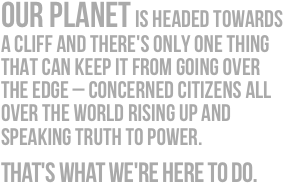by Joe Perullo
There was a special Open-ended informal consultation on Wednesday organized by the president of the COP to discuss the possible Durban outcome. There’s no definition on what the outcome is right now, but it will for sure address the concerns arising from the potential elimination of the second commitment period of the Kyoto Protocol. The US was second or third on the initial speakers list, but strategically told the president that it was having “technical difficulties” and wouldn’t be ready to talk until later…
Indonesia took the floor, stressing the need for the conclusion of the Bali Action Plan (adaptation). Kenya and almost all others wanted a second commitment period to be part of the Durban package. Colombia and Cape Verde recognized the insufficiency of the KP (in both quantity of emission reductions required and implementation) and requested full operationalization of the Green Climate Fund, while The Bahamas mentioned how the amount of money in the Adaptation fund is insufficient.
Norway jumped on board with the developing countries stating its “faith in the facilitators.” This reveals the Scandinavian nation’s concerns over transparency in the process. Norway is a developed but non-essential player who wouldn’t be part of any side discussion by, say, the US, China, and India. With fears of being “left out of the room,” Norway called for the president and facilitators to keep the process opened for all the parties.
New Zealand stressed operationalization of the Cancun Agreements, which include the Green Climate Fund (GCF) and the Climate Technology Centre (CTC).
After all of these concerns of a Durban outcome were expressed, the US was finally ready to take the floor. It played a wild card: instead of addressing the stated issues, the US ranted on how the AWG-LCA needed to be completed, meaning it should not be given any more time to address the five pillars of the Bali Road Map (shared vision, mitigation, adaptation, technology development and transfer, and finance). At the moment, LCA has barely finished developing policies for these, and has completely avoided mitigation.
Had the US said this in the beginning when it was supposed to, the other delegates would have focused their talks around keeping the LCA alive. Soon after, the meeting was over and the US could slip out without having to defend itself from a torrent opposition.


